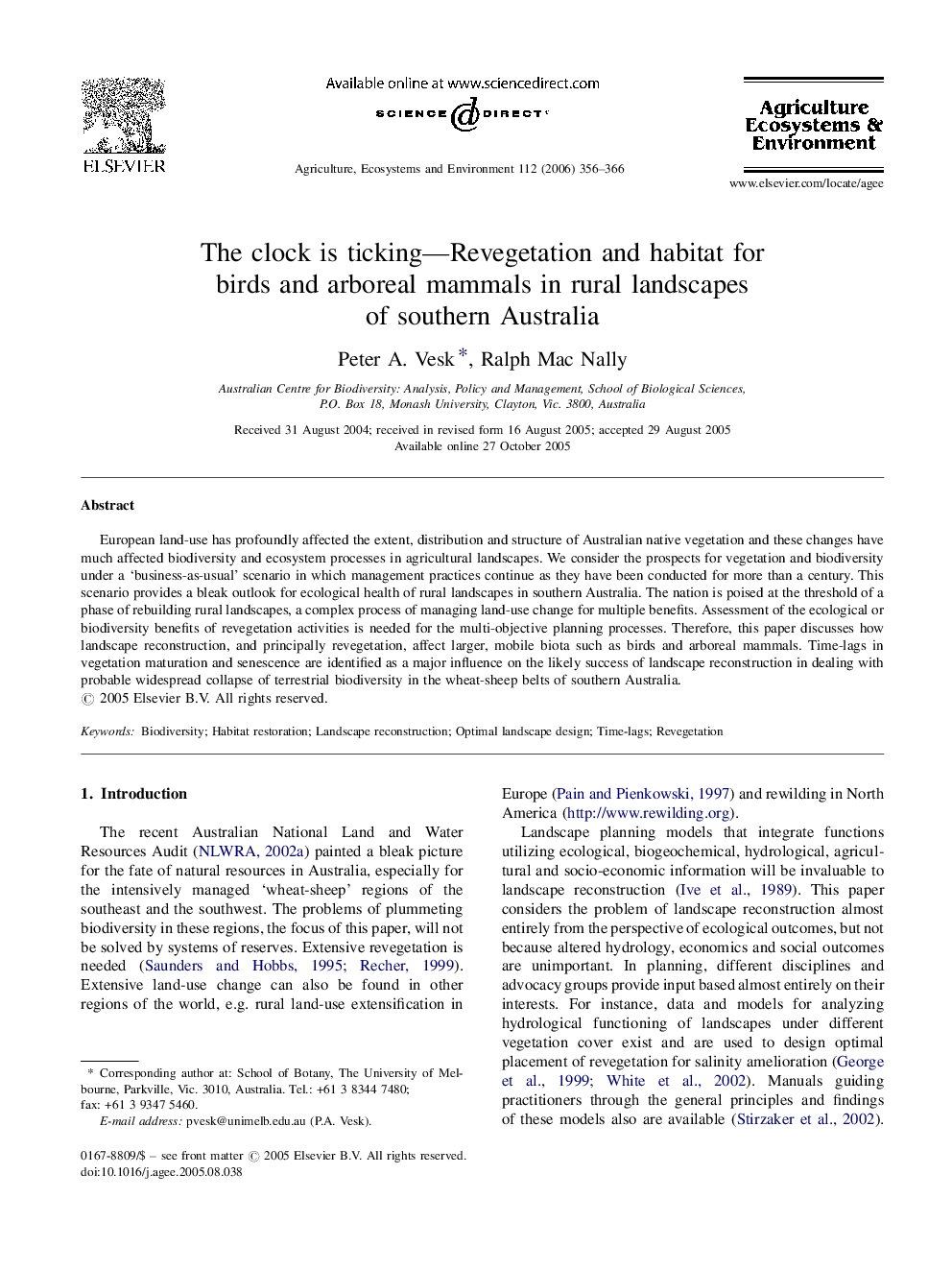| Article ID | Journal | Published Year | Pages | File Type |
|---|---|---|---|---|
| 2416040 | Agriculture, Ecosystems & Environment | 2006 | 11 Pages |
European land-use has profoundly affected the extent, distribution and structure of Australian native vegetation and these changes have much affected biodiversity and ecosystem processes in agricultural landscapes. We consider the prospects for vegetation and biodiversity under a ‘business-as-usual’ scenario in which management practices continue as they have been conducted for more than a century. This scenario provides a bleak outlook for ecological health of rural landscapes in southern Australia. The nation is poised at the threshold of a phase of rebuilding rural landscapes, a complex process of managing land-use change for multiple benefits. Assessment of the ecological or biodiversity benefits of revegetation activities is needed for the multi-objective planning processes. Therefore, this paper discusses how landscape reconstruction, and principally revegetation, affect larger, mobile biota such as birds and arboreal mammals. Time-lags in vegetation maturation and senescence are identified as a major influence on the likely success of landscape reconstruction in dealing with probable widespread collapse of terrestrial biodiversity in the wheat-sheep belts of southern Australia.
